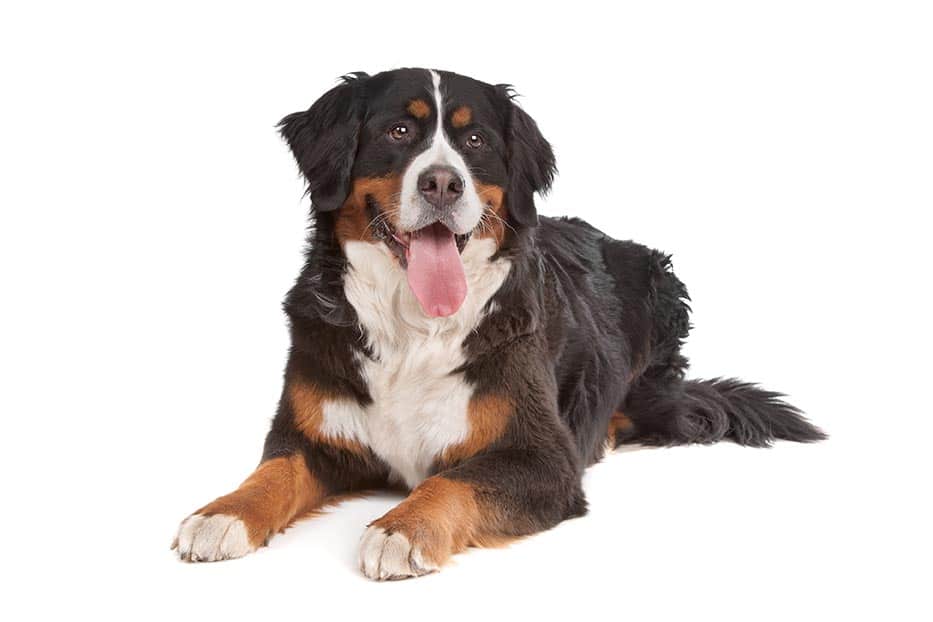 To keep a Bernese Mountain Dog’s feet in good condition, the feet and nails should be inspected weekly and the pad hair and nails trimmed when necessary. If your dog lives in a harsh winter climate, painful ice balls can form between the pads, or he could be walking through ice and snow-melting chemicals. Hair between the pads can cause a dog to slip on tile or hardwood floors.If your dog’s footfall causes a loud, audible “click” on a tile or hardwood floor or on the street when walking, then the nails should be trimmed. Nails that are too long can cause the dog’s feet to splay or the toes to spread too far apart.
To keep a Bernese Mountain Dog’s feet in good condition, the feet and nails should be inspected weekly and the pad hair and nails trimmed when necessary. If your dog lives in a harsh winter climate, painful ice balls can form between the pads, or he could be walking through ice and snow-melting chemicals. Hair between the pads can cause a dog to slip on tile or hardwood floors.If your dog’s footfall causes a loud, audible “click” on a tile or hardwood floor or on the street when walking, then the nails should be trimmed. Nails that are too long can cause the dog’s feet to splay or the toes to spread too far apart.
Either a nail grinder or a clipper will work, but if a grinder is used, be very careful not to grab any of the hair either around the nails or between the pads. Not only can this frighten your dog, but it can be quite painful and rip out patches of fur. Done properly, a grinder can be the fastest and easiest way to trim a dog’s nails.
The Trimming Process
Use a damp cloth to clean between your dog’s pads. If the hair seems long, use blunt-edged scissors to trim the hair level with the pads. Some owners also neaten up the hair around the nails, just to give the feet a clean appearance. If your dog has any sores or scratches on his pads, clean them with soapy lukewarm water. Keep an eye on any open sores on the pads, and always get a veterinary evaluation for any open wound that looks deep or oozes.
Acclimate a Bernese puppy to nail trimming slowly and the process will be easier for all involved. From his first day at his new home, your pup should have his toes and feet handled at least daily. Pair foot handling with a smile, kind words, and bits of treats so that by the time his nails need to be trimmed, he will associate good things with his feet being touched.
If using a grinder, acclimate your dog to the sound first before attempting to grind the nails. With the grinder turned on, let your dog investigate the noise without getting too close to the drum. Tell him
what a brave boy he is, give him a special treat, and turn it off.
The first time a grinder is used on your dog’s nails, trim one nail, treat and praise, and stop. Later, grind another nail, treat, and stop. Touch the drum to each nail for no longer than two or three seconds. It’s not necessary to apply pressure to the nail because the speed of the grinder along with the sanding band does all the work.
The same process applies with a pair of nail clippers. Simply acclimate your puppy to the touch of the tool before actually cutting a nail. Cut just the tip of the nail, then praise and offer a tasty treat to the dog. Go slowly to protect the quick from accidental clipping.
Because some or all of a Bernese Mountain Dog’s toenails are black, the nail quick—the blood
vessel running through the nail—can be tricky to see. The quick might be visible as either a white, silver, or pale pink sliver under the nail. If you accidentally nick the quick using either a grinder or clipper, press the nail in styptic powder to staunch the bleeding.
If you’re like a lot of owners, the first time you nick the quick, the nail bleeds, and your dog winces, you’ll vow to always take him to a groomer or veterinary technician for all subsequent nail trims. That’s okay too. Your Bernese Mountain Dog will appreciate the car ride and camaraderie with you.
Some groomers file down rough nail edges with a sturdy metal dog- or human-grade steel nail file. This protects carpet and furniture from snags due to sharp nail edges. With firm pressure, swipe the nail in one direction to remove any sharp edge.

